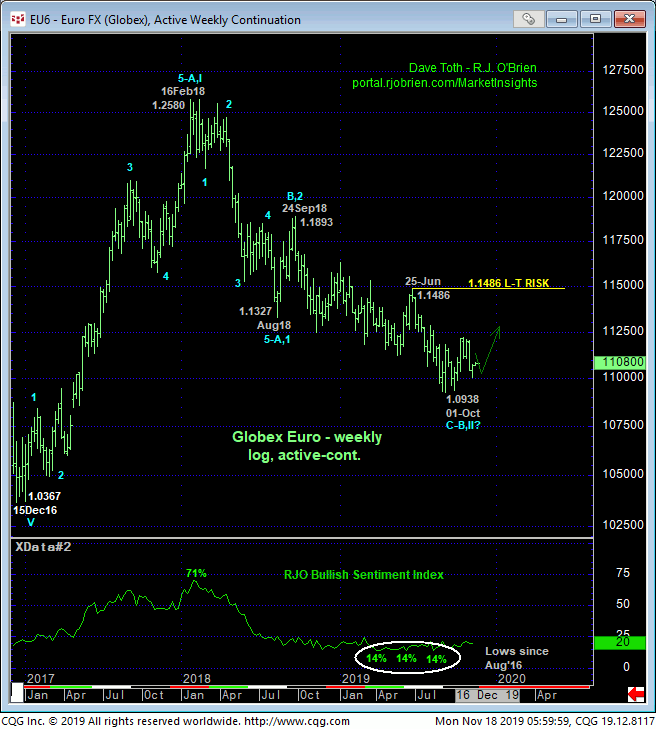
DEC BRITISH POUND
Overnight’s recovery, as scant as it was, above 31-Oct’s 1.2994 high and our short-term risk parameter discussed in 07-Nov’s Technical Blog renders the sell-off attempt from 21-Oct’s 1.3037 high a (textbook) 3-wave affair as labeled in the 240-min chart below. Left unaltered by a relapse below 08-Nov’s 1.2782 low, this 3-wave setback is considered a corrective/consolidative affair that warns of a resumption of Oct’s uptrend the preceded it, consistent with our longer-term base/reversal count. Per such, that 1.2782 low serves as our new short-term risk parameter from which shorter-term traders with tighter risk profiles can now base non-bearish decisions like short-covers and resumed bullish punts.
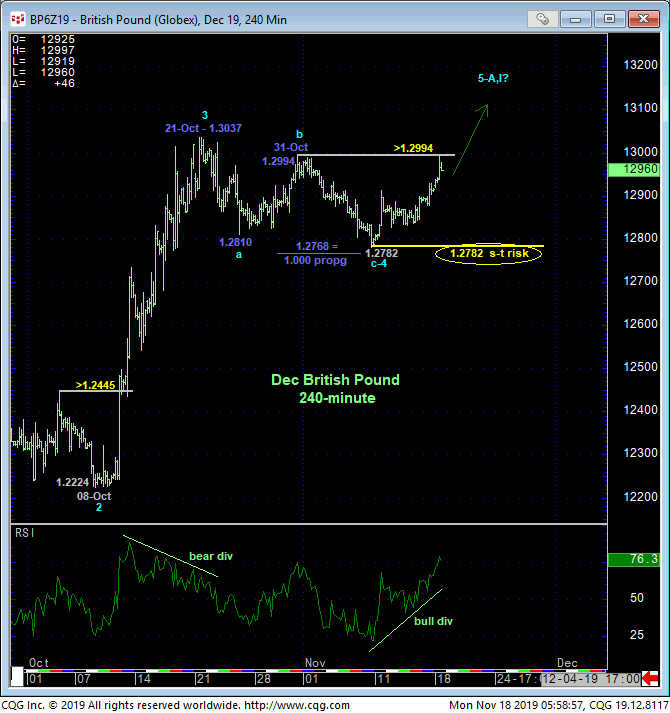
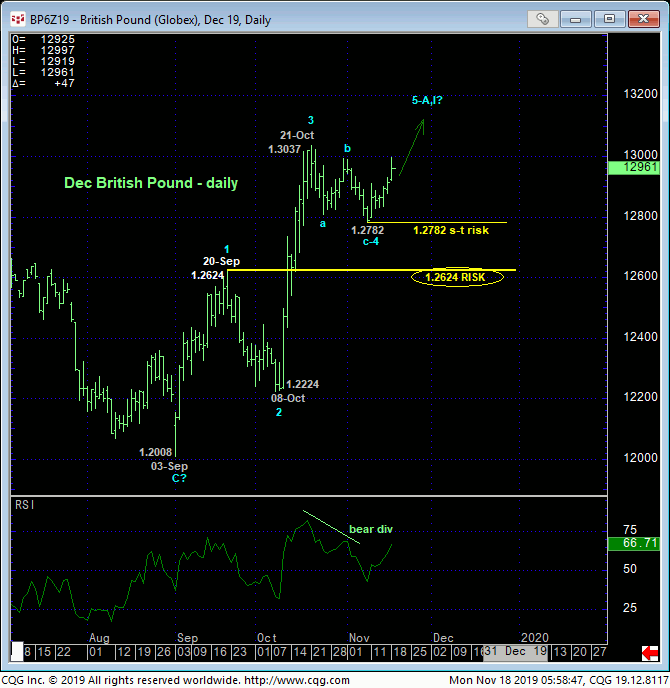
Moving out to a daily basis above, it’s easy to see the corrective bull-flag behavior of the relapse attempt from 21-Oct’s 1.3037 high relative to the broader developing uptrend that dates from 03-Sep’s 1.2008 low that we believe is part of a base/reversal-threat environment that could be major in scope. Introduced in 11-Oct’s Technical Blog, this major base/reversal count is predicated on:
- the market’s obvious rejection of the 1.2000-area support that dates from Jan’17’s low
- a bullish divergence in WEEKLY momentum above 20-Sep’s 1.2624 initial counter-trend high
- the market’s gross failure to sustain 3Q19 losses below key former support-turned-resistance from Dec’18 around the 1.25-handle
- historically bearish sentiment/contrary opinion levels and
- “outside WEEKS up” the weeks of 03-Sep’s 1.2008 low and 08-Oct’s 1.2224 corrective low.
On this broader scale, commensurately larger-degree weakness below at least 20-Sep’s 1.2624 (suspected 1st-Wave) high is minimally required to jeopardize the impulsive integrity of this developing bull trend from 03-Sep’s low, render it a 3-wave and thus corrective structure and re-expose the secular bear trend. IN lieu of such sub-1.2624 weakness, the market remains arguably in the early stages of a correction or reversal higher that could surprise by its scope.
These issues considered, a bullish policy remains advised for long-term players with a failure below 1.2782 required to pare exposure to more conservative levels and subsequent weakness below 1.2624 required to jettison the position altogether. Shorter-term traders whipsawed out of bullish exposure following 07-Novs bearish divergence in short-term momentum are advised to return to a bullish policy with cautious bullish exposure at-the-market (1.2968) and a failure below 1.2782 required to negate this call and warrant its cover. In lieu of such sub-1.2782 weakness, we anticipate a breakout above the past few weeks’ resistance from the lower-1.30-handle ahead of further and possibly accelerated gains thereafter.
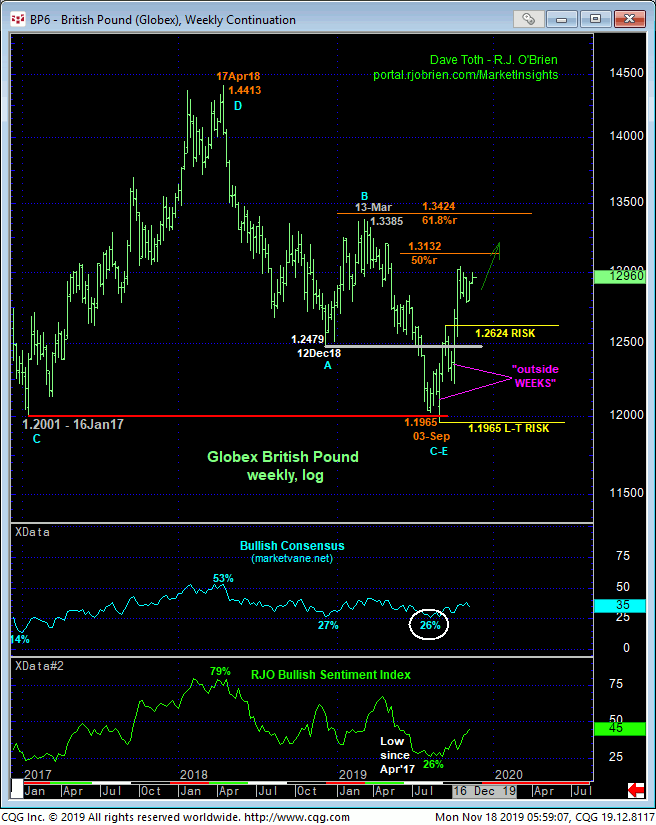
While the technical construct in sterling remains constructive, the better bullish play may be in the euro given the EURGBP cross’ position at the lower-quarter of its 3-year range shown in the weekly chart below. A recovery above 07-Nov’s 0.8660 corrective high will confirm a bullish divergence in daily momentum that will break at least Oct-Nov’s portion of the past quarter’s intra-range relapse and expose another intra-range recovery that could be relatively extensive. We discuss the euro’s key risk parameters below.
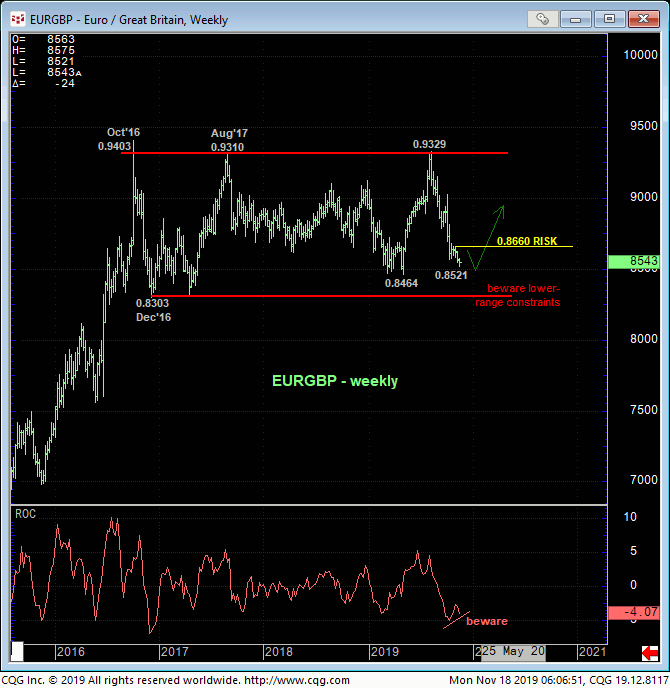
DEC EURO
The market’s recovery Fri above 11-Nov’s 1.1067 minor corrective high confirms a bullish divergence in short-term momentum in the 240-min chart below. This mo failure identifies Thur’s 1.1009 low as one of developing importance and our new short-term risk parameter from which non-bearish decisions like short-covers and cautious bullish punts can now be objectively based and managed.
As 29-Oct’s 1.1108 low and former support-turned-resistance remains intact, it would be premature to ignore the still-bearish prospect that the past couple days’ recovery attempt isn’t a (4th-Wave) correction within the intermediate-term downtrend. Herein lies the rationale for that 1.1108 low as our new longer-term risk parameter around which longer-term traders area advised to toggle directional biases and exposure. In effect, we believe this market has defined 1.1108 and 1.1009 as the key directional triggers heading forward.
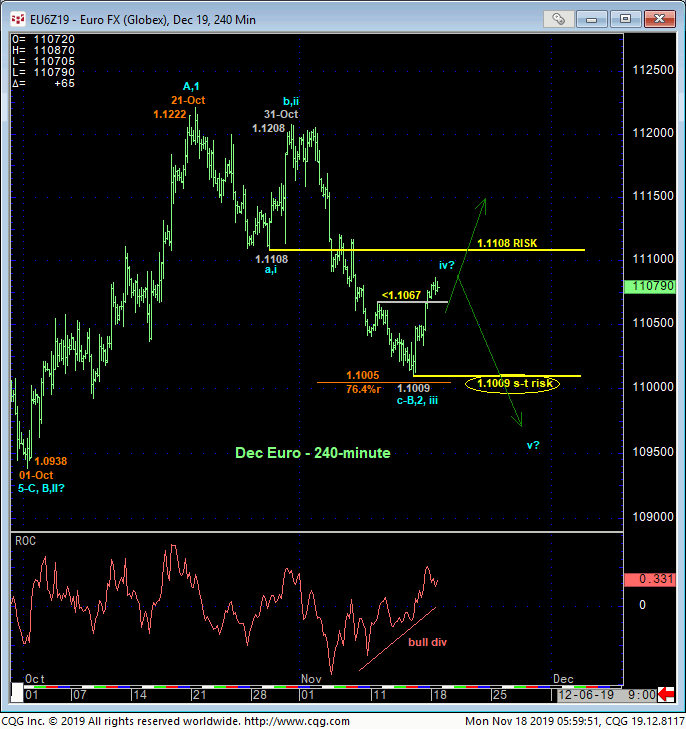
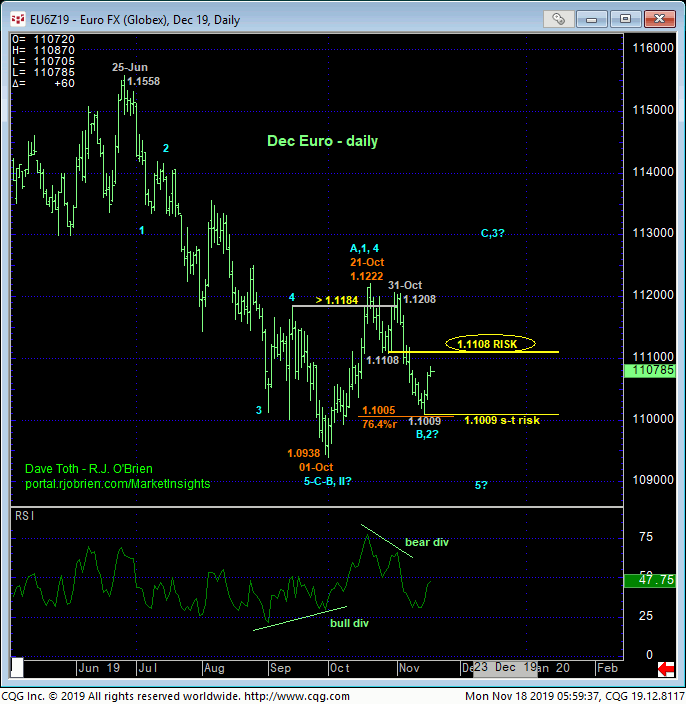
It’s interesting to point out that the past few weeks’ relapse attempt has thus far stalled in the area of the (1.1005) 76.4% retrace of Oct’s 1.0938 – 1.1222 rally, maintaining the broader bullish count that the price action from 01-Oct’s 1.0938 low is part of a major base/correction/reversal environment that could have very long-term bullish implications above 1.1222. Historically bearish sentiment levels for most of this year remains an important reinforcing factor to this long-term bullish count. Also, with the market still above Dec’16’s 1.0367 low, the prospect remains that the 20-MONTH relapse from Feb’18’s 1.2580 high is “only” a (B- or 2nd-Wave) CORRECTION within a major, multi-year base/reversal process. IF this is the case, the long-term risk/reward merits of a bullish policy down here would be mind-boggling.
These issues considered, traders are advised to move to a cautious bullish policy from 1.1065 OB with a failure below 1.1009 required to negate this call and warrant its cover. Reinforcing strength above 1.1108 would be cause to add more aggressively to this position ahead of what we believe will be a resumption of Oct’s uptrend to new highs above 1.1222.
